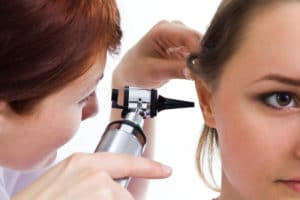New Treatment Option for Eustachian Tube Dysfunction (ETD)
- Posted on: May 16 2017
 Many patients complain of ear pressure, fullness, popping, hearing loss, ear pain, as well as dizziness and ringing in the ears. These are the typical symptoms of ETD or Eustachian Tube Dysfunction. The eustachian tube is the tube that connects the back of the nose to the middle ear. It serves to provide aeration and ventilation of the middle ear space. When the eustachian tube isn’t working to adequately ventilate the middle ear space, the middle ear will develop negative pressure. The basic idea is that the air in that space is being resorbed throughout the day and without new air coming up the Eustachian tube, there will be less air pressure in the middle ear than there is in the room. This means the ear drum will begin to suck into the middle ear space. The negative pressure and sucking in of the eardrum results in a feeling of fullness, pressure, ear pain, hearing loss, popping, as well as other symptoms such as dizziness, off balance sensation, and ringing in the ear.
Many patients complain of ear pressure, fullness, popping, hearing loss, ear pain, as well as dizziness and ringing in the ears. These are the typical symptoms of ETD or Eustachian Tube Dysfunction. The eustachian tube is the tube that connects the back of the nose to the middle ear. It serves to provide aeration and ventilation of the middle ear space. When the eustachian tube isn’t working to adequately ventilate the middle ear space, the middle ear will develop negative pressure. The basic idea is that the air in that space is being resorbed throughout the day and without new air coming up the Eustachian tube, there will be less air pressure in the middle ear than there is in the room. This means the ear drum will begin to suck into the middle ear space. The negative pressure and sucking in of the eardrum results in a feeling of fullness, pressure, ear pain, hearing loss, popping, as well as other symptoms such as dizziness, off balance sensation, and ringing in the ear.
The mainstay of therapy for years has been medical therapy, such as allergy therapy. Unfortunately, it is not very successful in some patients. In those patients that failed medical therapy, all we have had to offer was placing tubes in the ear drum. There are many negatives of having a tube such as possible worsening of hearing, water precautions, and possible a hole in the ear drum that could require surgery to repair.
Now we can offer a new approach, with XprESS™ ENT Dilation System, in patients with persistent ETD! In this procedure a small balloon is placed through the nose and into the eustachian tube without the need for any incisions. The balloon is then used to inflate and expand the eustachian tube for 2 minutes. The patient in our office is under IV sedation by a board certified anesthesiologist so there is no pain or recollection during the procedure. There is essentially no recovery after the procedure. Medications may be given to assist with the dilation. Patients do not require pain medication and they can return to normal activity the next day. The studies to date have involved 60 patients and have demonstrated long lasting results. On going further follow up will be reported in September 2017. The dilation can be repeated if needed in the future and it will be important to also correct any underlying sinus or allergy issues.
Tagged with: Eustachian Tube Dysfunction
Posted in: Eustachian Tube Dysfunction

